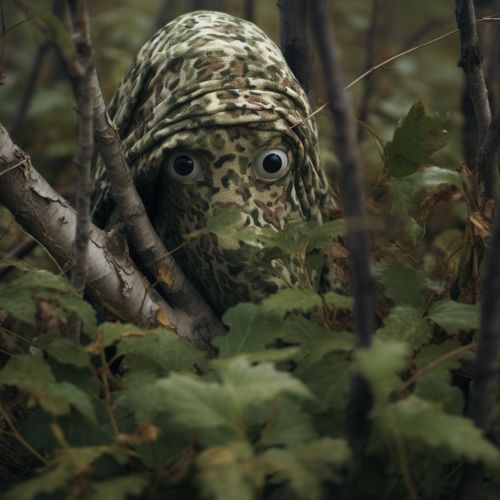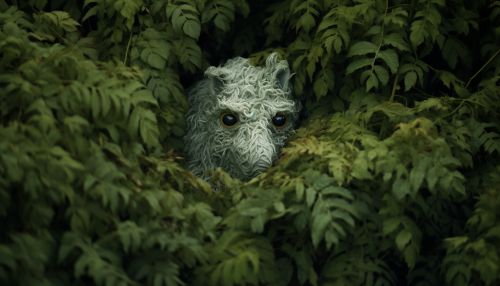Camouflage
Introduction
Camouflage is a complex phenomenon used by various organisms to blend in with their environment, making them difficult to detect by predators or prey. It is a survival strategy that has evolved independently in numerous species across different taxa, including mammals, birds, insects, and reptiles. Camouflage can involve visual, olfactory, or auditory deception and can be static or dynamic depending on the context of the situation.
Evolution of Camouflage
The evolution of camouflage is a fascinating aspect of natural selection. It is a clear demonstration of how species adapt to their environment over time to increase their chances of survival and reproduction. The evolution of camouflage is driven by the predator-prey relationship, where predators evolve to better detect their prey, and prey evolve to better evade their predators. This dynamic relationship, known as the Red Queen's race, drives the continuous evolution of more sophisticated and effective camouflage strategies.
Types of Camouflage
There are several types of camouflage, each with its unique characteristics and methods of deception. These include:
Cryptic Coloration
Cryptic coloration is the most common form of camouflage, where an organism's coloration matches the color and pattern of its environment. This type of camouflage is prevalent in both terrestrial and marine environments and is used by a wide range of species from insects to mammals.
Disruptive Coloration
Disruptive coloration involves patterns that break up the outline of an organism, making it difficult for predators to recognize the organism's shape. This type of camouflage is often used by prey species to confuse predators.
Mimicry
Mimicry is a form of camouflage where an organism resembles another species or object in its environment. This can be used by both predators, to lure unsuspecting prey, and by prey, to deter potential predators.
Countershading
Countershading is a form of camouflage where an organism's upper side is darker than its underside. This helps to counteract the effect of sunlight, making the organism appear flat and less noticeable.
Mechanisms of Camouflage
Camouflage mechanisms can be broadly classified into physical and behavioral mechanisms.
Physical Mechanisms
Physical mechanisms of camouflage involve changes in the organism's body, such as color, pattern, texture, and shape. These changes can be either permanent or temporary, depending on the species and the situation.
Behavioral Mechanisms
Behavioral mechanisms of camouflage involve changes in the organism's behavior, such as remaining still, hiding, or moving in a certain way. These behaviors can help the organism blend in with its environment and avoid detection.
Camouflage in Different Environments
Camouflage strategies can vary significantly depending on the environment. In the desert, for example, organisms often have sandy or earthy colors to blend in with the sand and rocks. In the forest, organisms often have green or brown colors to blend in with the trees and leaves. In the ocean, organisms often have blue or grey colors to blend in with the water.
Camouflage in Humans
Humans have also used camouflage for thousands of years, primarily for hunting and warfare. Today, camouflage is used in a variety of contexts, from military uniforms to fashion and art.
Conclusion
Camouflage is a fascinating and complex phenomenon that demonstrates the power of evolution and natural selection. It is a testament to the incredible adaptability and resilience of life on Earth.
See Also


